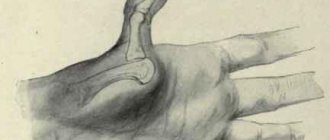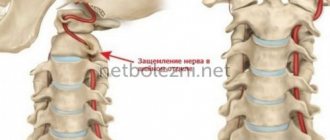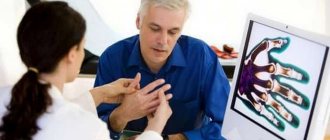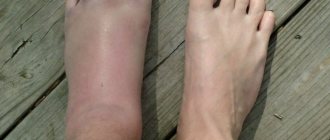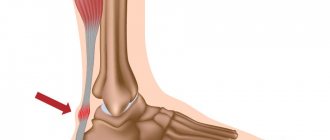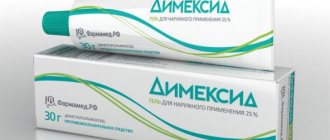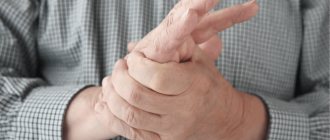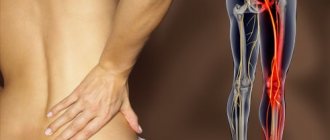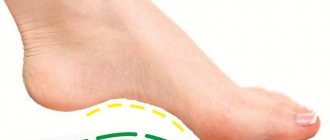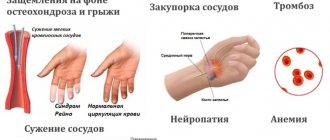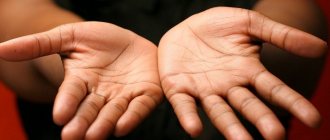Every person, at least once in his life, has encountered a bruise on his little toe. A corner of a closet, a chair or a curb on the street - many people have hit these objects repeatedly. And since the little finger has a large number of nerve endings and blood vessels, severe pain, swelling and hematoma always occurred.
For a large number of victims, these attacks passed without a trace within several hours, or at most within a day. But some injuries led to the development of a bruise, but some caused a dislocation or fracture of a finger. How to distinguish a bruised finger fracture?
Anatomy
The smallest toe has a very complex structure - small bones, thin tendons, which are most susceptible to injury. The nail plate is small, which means that it can crack even with a slight blow. The soft tissues of the finger consist of a large number of nerve endings. Due to this feature, the slightest damage to it causes severe pain.
The small size of the little toe does not reduce its importance - on the foot, it is the toes located on the edge that are responsible for balance. The little finger is also needed when running, jumping and other physical activities. A separate muscle found in the little toe is responsible for strengthening the arch of the foot - the short flexor muscle, which abducts and bends the toe.
Impact or pressure on this finger leaves behind severe damage, swelling and bruising. And in order to determine whether it is broken or not, it is necessary to immediately begin diagnosis and treatment.
Traditional therapy
Folk remedies have long been considered effective for treating a damaged little finger. It should be understood that unconventional methods do not replace full-fledged therapy and are auxiliary actions.
Self-prepared remedies according to the recipes of our ancestors help reduce pain, stop the inflammatory process, and restore the mobility of the little finger.
Compresses made from onion juice are most often used. To prepare it you will need a medium onion, sugar, a piece of fabric or gauze. First you need to squeeze the juice from the onion, add a tablespoon of sugar to it and beat well. Afterwards, gauze is placed in the resulting paste, moistened and applied as a bandage to the affected area. The duration of the manipulation is from 1.5 to 2 hours.
Similarly, compresses are made from wormwood, raw potatoes, viburnum, and aloe. The injured nail plate is restored using an iodine mesh. At the slightest discomfort, stop the manipulation, rinse your finger with clean water, and treat with an antiseptic.
Applications made from plantain leaves and cabbage have proven themselves positive. You can apply the leaves for a long period, they will not harm the little finger.
Symptoms
Due to its size, the little finger has small bones and thin tendons that are easily injured and torn.
To avoid missing this injury, you should know the signs of a bruise:
- Pain syndrome. For the first time, minutes after the blow, there is severe pain that slowly subsides, but does not go away completely. Gradually it turns into aching, pulsating. This is due to the fact that the finger has many nerve endings.
- Edema, a large swelling that spreads to adjacent fingers and up the limb.
- Hematoma. With a strong blow it spreads to the nail and further down the leg. Blood may also accumulate under the nail plate, which after a couple of days will turn black and begin to peel off.
- The ability to move after a bruised toe is not lost; the toe remains mobile. If movement is impossible, then a dislocation or fracture can be suspected.
- Development of lameness on the injured side.
- With a severe bruise, crushing of tissues often occurs, followed by their death.
- Trauma to the nail plate is indicated by a change in color to blue or black, and the nail may also be pulled away from the nail bed.
- Abrasions and wounds on soft tissues.
- If damage to the nerve fibers occurs, then a neurological disorder is observed - numbness, twitching of the finger.
It is not necessary that all symptoms will appear immediately. Two or three symptoms may appear initially. But you should definitely pay attention to them. If they persist for five days, then you should consult a specialist to avoid the development of serious complications.
Causes
Inflamed little toe
The little toe, located in the extreme position on the feet, is injured more often than other fingers, receiving accidental blows to furniture, hard objects, while playing football, or while playing other sports. The little finger can easily become injured, dislocated or even fractured if someone steps on it. At the slightest bruise of this finger, a person feels severe pain.
A bruise of the extreme toe is a mechanical injury, closed by a violation of the subcutaneous tissue or skin. It is characterized by a complex structure, although it is similar to the structure of other toes. The little finger also has tendons, with the help of which it bends and extends, joints, ligaments, capsules and skin. The difference is that the size of the bones of this finger is very small, so their integrity can easily be damaged by mechanical stress.
A bruised little toe is considered one of the most common toe injuries. It may be accompanied by concomitant injuries in the form of fractures. In case of a bruise, first aid is necessary; if the injury is severe, the doctor should examine it and indicate what to do to treat the little finger.
Bruise or fracture?
Very often, injury to the little finger leads to more negative damage. The bruise may be accompanied by a dislocation, fracture or sprain. How to distinguish a fracture from a bruised toe and other injuries?
When bruised, the finger remains in its anatomical place, but when dislocated or broken, it protrudes and turns in an unnatural way. On palpation, a characteristic crunch of bone fragments appears.
Such accompanying signs distinguish a bruise from a fracture or dislocation, but only a traumatologist who needs to show the location of the injury as quickly as possible can make an accurate diagnosis. Most often, a fracture of the finger is visible on the x-ray.
Important! You cannot check these differences yourself. The risk of dislodging bone fragments during a fracture is high. If you are injured, you must call a team of medical workers, and before they arrive, try to provide first aid.
Diagnostics
The most important thing in diagnosing this type of fracture is an x-ray of the foot. X-rays are performed in one or two projections. It is possible to detect a violation of bone integrity in the image in 95–99% of cases. X-rays make it possible not only to identify a fracture, but also to determine the position of bone fragments, which subsequently allows you to choose treatment tactics.
An X-ray of the foot is usually sufficient to confirm the diagnosis.
When the bones or soft tissues of the little finger are damaged, methods such as computed tomography are not used in practice, since all the necessary data can be obtained using x-rays. However, the cost of the procedures differs significantly.
First aid
After receiving injuries, the provision of first aid should not be delayed, so as not to provoke some complications - the occurrence of a hematoma and compaction at the site of the injury.
It is advisable to provide assistance without panic and following the generally accepted axiom:
- Remove the victim's shoes. This is necessary so that she does not squeeze the injured finger.
- Perform a visual inspection of the injured area to identify more serious damage. Finger activity should be checked. The presence of limited mobility for the first time hours after receiving a bruise may indicate the presence of a dislocation, fracture, or sprain.
- The bruised area should be cooled - apply an ice compress for ten minutes. With its help you can relieve severe pain. The cold will cause the blood vessels to narrow, which will prevent swelling and bruising. If necessary, the procedure can be repeated after 20 minutes.
- Disinfection of damaged skin - scratches, cuts and wounds must be washed with water and treated with an antiseptic. Hydrogen peroxide is necessary to stop bleeding.
- Apply a sterile bandage. This measure is advisable in the presence of open wounds to prevent dirt from entering and causing infection.
- Use a pressure bandage. It is used if the nail plate peels off after a bruise. Before applying the bandage, you need to remove any hanging parts of the nail that may be in the way.
- Immobilize the little finger by taping it to the ring finger with a bandage or piece of cloth. The bandage is not applied too tightly, since the presence of a fracture has not yet been ruled out.
- The injured lower limb should be placed on an elevation and ensure complete rest. This will help prevent disturbances in blood circulation.
- Apply painkiller. To do this, you can take tablets or use ointment.
In case of serious injuries, treatment and pain relief should be carried out only by specialist traumatologists.
Very often, when providing assistance, mistakes are made that are not advisable to make when dealing with a bruise:
- Rub, knead and apply pressure to the bruised finger.
- Apply warm compresses and use a warming gel.
- Forcefully bend or straighten the damaged joint.
Damage to the lower extremities limits freedom of movement. That is why you should not self-medicate and neglect to see a doctor.
Physiotherapy
In the later stages, a bruise of the little finger is treated with physiotherapy. Additional methods enhance the effect of traditional treatment and restore damaged tissue.
List of procedures:
- Analgesic effect - cryotherapy of an injured finger (cold), electrophoresis (low-frequency direct electric current) with Lidocaine, diadynamic therapy (current of different frequencies), amplipulse therapy (alternating electric current).
- Cold compresses are used to constrict blood vessels to eliminate swelling.
- Anti-inflammatory effect - electrophoresis with Cortisone, Dexamethasone, UHF (ultraviolet exposure), magnetotherapy (pulsed magnetic waves).
- To remove excess lymph fluid - alcohol compresses.
- To expand blood vessels for resorption of hematomas - galvanization (galvanic current), ultraphonophoresis (ultrasound), infrared radiation, magnetotherapy (pulsed magnetic waves), salt heating pad (dry heat).
The choice of technique and duration of the course is determined by the doctor after assessing the general functional state and concomitant diseases.
Treatment
With this injury, timely treatment of the bruised little toe is of great importance, otherwise signs of post-traumatic arthrosis may appear, which can occur after several months or years. When moving, arthrosis causes discomfort, pain and causes swelling of the foot.
Only a medical professional can conduct a competent examination of the injury followed by effective treatment. After an injury, a traumatologist will prescribe a number of restorative procedures:
- taking medications;
- physiotherapy;
- surgical intervention.
Preparations for the treatment of bruises are ointments and creams with anti-inflammatory, anti-edematous and analgesic effects.
Physiotherapy is carried out in the presence of edema and hematomas on the finger - electrophoresis, mud therapy, UHF therapy, magnetic and laser therapy.
If a fracture occurs, a dislocation occurs, or numerous hematomas form, surgical intervention is resorted to.
Treatment at home
A slight bruise of the little finger can be done at home, but only after consulting a doctor. There are a lot of traditional medicine and pharmaceuticals that can help quickly cure bruises on the leg.
To treat injury with folk remedies, the following recipes are suitable:
- Compresses made from crushed banana peels. To do this, take a clean peel and pass it through a meat grinder or blender. Next, the resulting mass is spread on cotton cloth or gauze and applied to the damaged area. After this, wrap the compress with cling film and leave for two hours. The procedure is carried out twice a day - morning and evening, you can leave it overnight.
- Bodyagi powder. Bodyaga is dried and crushed sea sponges. You can buy it at the pharmacy. This product relieves inflammation, nourishes the skin and regenerates tissue. Used as a compress.
- Applications with cooling essential oils. They have a local irritating and cooling effect. For example, peppermint oil fights inflammation, pain and relieves swelling.
Folk remedies work well against bruises, but resorting to them is allowed only with the mildest degree of damage. In all other cases, you should first consult with a specialist.
Therapeutic actions
Therapeutic tactics are aimed at relieving unpleasant symptoms and speeding healing of the fifth toe. In the first two days after injury, therapeutic measures are aimed at preventing the inflammatory reaction and reducing the manifestation of the main symptoms. At first, warming procedures are prohibited.
Ice should be applied to a bruised little finger every 3 hours throughout the day. You can use a heating pad with cold water or chilled foods as ice. Cold is applied for no more than 10 minutes, after wrapping it in a thin cloth. This measure is necessary to reduce swelling and prevent inflammation.
During treatment, you should not lean on the foot with the damaged toe. For safe movement, you can use axillary or elbow crutches. When choosing a rehabilitation remedy, you need to take into account the height and weight of the victim. For local anesthetic effects, cooling gels with an anti-edematous effect are used - Dolobene, Nise, Bystrumgel.
Starting from the third day, warm compresses (Dimexide with Novocaine) and ointments (Finalgon, Indomethacin ointment, Voltaren) are used to resolve bruises and restore damaged tissues. To resolve hematomas, topical agents are used - Troxevasin, Lyoton, Heparin ointment. Throughout the entire period of treatment for pain, NSAIDs (Ketoprofen, Ketorolac) are prescribed in tablet form.
Rehabilitation
The rehabilitation course should take place in the mode of rest and comfort of the injured limb:
- During the first 2-3 days, you should not put any strain on your leg by walking. It is recommended to use a fixing bandage, orthopedic insoles or a special insert - a pelot for the forefoot.
- During the recovery period, it is necessary to choose comfortable shoes with thick, hard soles and wide toes.
- It is allowed to massage, but very carefully - fingers should be easily bent and unbent.
- A few days after injury, it is recommended to use warm baths with sea salt - 1 tbsp. salt per 1 liter of water. The procedure is carried out for 15 minutes twice a day. There is no need to rinse your feet after completing the procedure. This will help achieve maximum therapeutic effect.
The recovery course after an injury is designed to last two weeks, but if you follow all the specialist’s instructions and carry out therapy in a timely manner, the period can be reduced to seven days.
Toe injuries
Despite all its outstanding qualities, the foot is still one of the most vulnerable parts of the human skeleton, since it not only bears its weight and serves as a support for it, but also comes into contact with many objects during motor functions:
- sudden movements;
- stumbling;
- sudden swings;
- falls.
Due to this amount of activity, injuries often occur, with the toes being the most affected. They require mandatory, immediate treatment, without which the bruised finger may not fully adapt.
What should you do first? It is important to find out if your finger is broken. To do this, you need to understand the symptoms of fractures and simple bruises - how to distinguish them from each other.
The severity of the injury affects its course and further recovery.
- The first degree is characterized by slight damage to the skin with the formation of abrasions.
- The second involves the formation of swelling on the injured finger with acute pain that does not subside for a long time.
- The third degree is characterized by damage not only to the skin, but also to tissues.
- The fourth is a dangerous injury that often ends in fractures.
Consequences
Most people, after bruising their little finger, hope that everything will go away on their own, and therefore do not go to the emergency room, but also do not provide assistance to their little finger on their own. All this can lead to negative consequences. What complications can occur after an injury to the little toe?
- Subungual hematoma - since the little finger is a small finger, when a bruise occurs, the nail is most often damaged. Hemorrhage occurs under the nail plate. A feeling of fullness and pulsation appears in the finger from the blood accumulated under the nail.
- Post-traumatic arthrosis of the finger joints. It occurs after some time and has the following symptoms - pain when stepping on the foot, swelling of the little toe.
- Finger fracture. If it was not diagnosed in time, because the victim did not go to the doctor, the fracture heals, but incorrectly, since conditions for proper healing and restoration were not provided. In the future, the victim will feel pain in the area of the little finger, his gait will change, and in severe cases, lameness will develop.
Therapy for a bruise is not so complicated and it should be carried out in a timely and competent manner. Otherwise, the consequences of the injury will last a lifetime.
Pills
Analgesics for internal use are effective. The following remedies are considered the best:
- "Paracetamol". Painkillers reduce the response to pain by blocking secreted enzymes. The drug is used in the treatment of adults and children. The doctor calculates the dose based on the patient’s age, weight and other characteristics. The product can be combined with other drugs; it has few side effects. It has a short duration of action (up to 4 hours), so it is not often used in traumatology.
- "Ibuprofen." It is a non-steroidal anti-inflammatory drug. Often used by traumatologists in the treatment of various tissue injuries. It has a longer effect – about 6 hours. Ibuprofen should not be used for gastrointestinal diseases. Can be used in the treatment of children.
- "Ketanov." This is a powerful remedy that is often used for serious injuries. You should not use it for more than 2 days. The drug is ineffective for hematomas, but it allows pain relief from the bruise quickly and for a long time. The product should not be used by patients under the age of 16 years, as well as during pregnancy and lactation. These painkillers should not be taken if you have diseases of the heart, kidneys, or bleeding disorders. Ketanov has many side effects, so this drug is used only in cases where the effect is higher than the possible negative consequences.
- "Diclofenac". Eliminates pain, reduces swelling and accelerates the resorption of hematomas. It is a safe remedy; side effects include only allergies to the substances contained in the drug.
It is necessary to use any tablets after consulting a doctor. Equally important is to first read the instructions for the chosen drug. Dosage and treatment period must be observed. Then the course of therapy will be effective.
Symptoms and signs
The anatomical structure of the little finger is no different from other fingers and includes tendons, soft tissues, phalanges, blood vessels and nerve endings. The only difference is the size. The little finger is the smallest finger; its bones are thin and easily injured. Even a minor blow can lead to bruises, dislocations and cracks.
According to medical data, such injuries are most often diagnosed at home, but can also occur during sports, at work, or as a result of a traffic accident. If the cause is an accident, the lesion is often combined with other injuries to the musculoskeletal system.
A bruise on the extreme toe has pronounced symptoms. Immediately after the impact, the following symptoms develop:
- Acute pain. Gradually, the intensity of pain decreases, but does not go away completely. The affected area aches for a long time due to a violation of the integrity of nerve fibers and blood vessels.
- Swelling. The blow provokes muscle spasm. As a result, the soft tissues swell. If the injury is severe, the finger may lose sensation.
- Hemorrhage. Small vessels often rupture from a bruise. Blood leaks out and accumulates in the soft tissues. A hematoma appears. The skin turns red and gradually turns blue. If the nail plate is damaged, over time it turns black and peels off.
A sign of injury is pain when pressing on the affected area . The person feels discomfort when stepping on their foot and may limp when walking. Common symptoms of a bruise are scratches, abrasions on the skin and an unpleasant tingling sensation inside the finger. The above characteristics may appear partially. The clinical picture depends on the force of the impact and the depth of the injury.
Degrees
There are bruises of soft tissues, muscles and joints. In addition, damage to the little finger is classified according to severity:
- The first is that it does not violate the integrity of muscle and joint tissue. The blow causes minor scratches and pain, which pass without consequences.
- The second is manifested by severe pain. A hematoma grows in the affected area, swelling appears, and the mobility of the limb worsens.
- The third one occurs after a powerful blow from a heavy object or as a result of a fall. The finger and nearby tissues swell, the skin becomes engorged and purple. I can't step on my foot. Any touch to the little finger provokes unbearable pain.
- The fourth is developing in severe cases. It is diagnosed when the integrity of ligaments, joints, and bones is damaged. Open wounds may be observed. The finger loses motor function, darkens and swells.
A severe bruise requires qualified treatment. It is better to contact a traumatologist for any damage. Only a doctor can correctly determine the severity and select appropriate therapy.
Prevention
Preventive measures to prevent bruises of the lower extremities include the following recommendations.
- it is necessary to consume calcium and vitamin complexes to strengthen the bone structure;
- you need to play sports to generally strengthen the body;
- It is necessary to observe safety precautions in the home and at work.
What other advice can you give to all of us? Move carefully, take your time and don’t hit yourself. But since the trouble has already happened, you need to be fully armed and know how to act correctly.
